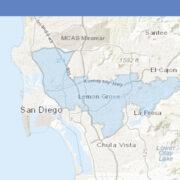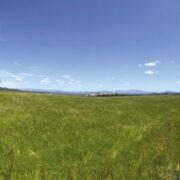ON July 1, Pres. Benigno S. Aquino III vowed to modernize the Philippine Air Force (PAF) before he steps down in 2016.
The president said that a P75-billion fund will be allocated for the PAF’s modernization, to acquire new and modern aircraft.
The country has retired the last of its US-designed F-5 fighters back in 2005 and is ill-equipped when it comes to air defense.
“Be assured that before I step down from office, our skies will teem with new and modern equipment such as lead-in fighters, long-range patrol aircraft, close air support aircraft, light lift fixed-wing aircraft, medium lift aircraft, attack helicopters, combat utility helicopters, air defense radar and flight simulators,” Aquino said.
“We cannot forever rely on repair and rehabilitation of equipment. Every time an air force plane flies, it’s not only the success of the mission that relies on the aircraft but also the lives of our pilots,” he added, albeit still lauding the air force’s capabilities for equipment repair and rehabilitation.
He underscored that his government needs a fully-modernized PAF to be able “to defend our territory and make Filipinos feel more secure against foreign intruders, or those who try to shock and pressure them.”
Earlier this year, Malacañang announced that the government will acquire 12 South Korean FA-50 fighter jets, which will be used for “training, interdiction and disaster response,” Philstar.com reported.
The passage of the Armed Forces of the Philippines (AFP) Modernization Law has enabled the Aquino administration to allocate funds to upgrade the armed forces’ equipment and other related requirements.
Under the new law, existing military bases will also undergo improvements, according to Defense Undersecretary Fernando Manalo.
The facilities will be readied to accommodate the arrival of the military assets to be acquired.
“That includes the hangar and the berthing facilities for the Navy. These are included in the infrastructure that we will need,” Manalo said.
Support facilities for naval bases in Cebu and Palawan will also be provided. However, it is still unclear if the bases in Subic are covered by the upgrade efforts.
Some probably surmise that these efforts for military upgrade are connected with the president’s controversial decision to open the country’s military facilities to our allies like the United States and Japan — a move to counter China’s aggressive actions in the region.
However, government officials clarified that it does not intend to violate the terms of the constitution and therefore, will not be putting up new foreign military installations.
In a chance interview at Camp Crame, Aquino emphasized that an access arrangement with our allies is “but the natural circumstance of” a “credible alliance” but that it would not be made permanent, as reported by Philstar.com.
“The access, let me clarify, will not be a permanent fixture in the bases, but they are our allies,” he said, adding that such an arrangement requires”mutual training and that will normally occur within our territory or the allies’ territory.”
“If we don’t get in touch with them in putting order to our system in cases of conflict, then I think that is the kind of wrong preparation. So, they also need someone who knows our terrain, and we also need inter-operability with them,” Aquino stressed.
Lawmakers are concerned about the decision and are asking for clarification regarding this access agreement.
Sen. Paolo Benigno Aquino IV (who is a nephew of the president) wants to know the implications of this temporary access, especially in the context of the Constitution and the Visiting Forces Agreement (VFA) between the US and the Philippines. He said that the presence of the US military or of other allies should only be permitted within the context of the VFA and similar agreements.
Sen. Juan Edgardo Angara said that “any setup resembling some degree of permanence would raise serious constitutional issues,” reported Philstar.com.
Sen. JV Ejercito that for as long as access is temporary, the arrangement should not be a problem. However, he recommended a review of the VFA, arguing that the US did not act when Chinese vessels established a de facto occupation of Panatag Shoal.
“One of the provisions or conditions of the VFA is that if one ally is in conflict with others, the other would support. I did not see any support when we were being bullied by China,” Ejercito said.
Sen. Nancy Binay said that the Senate needs to carefully go through the terms of reference for the planned access of Philippine bases by our allies, “because there might be violations.”
While the “temporary” access of our military bases by foreign allies remains a contentious issue, which requires vigilance over possible constitutional violations, the harsh reality is that the country is NOT yet prepared to face China’s sophisticated military power at this juncture.
The country is still in the midst of fortifying its military defense, whereas China is capable of striking anytime.
And regardless of this temporary access arrangement, the country can no longer afford to delay beefing up its defense capabilities. We cannot rely on our allies forever, nor can we compel them to compromise their own diplomatic relations with China.
Manalo was right when he said: “What we want is a minimum deterrence capability so that those who plan to wage war with us would think twice. Our lives are at stake here.”
(AJPress)




